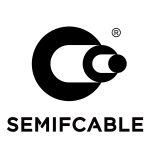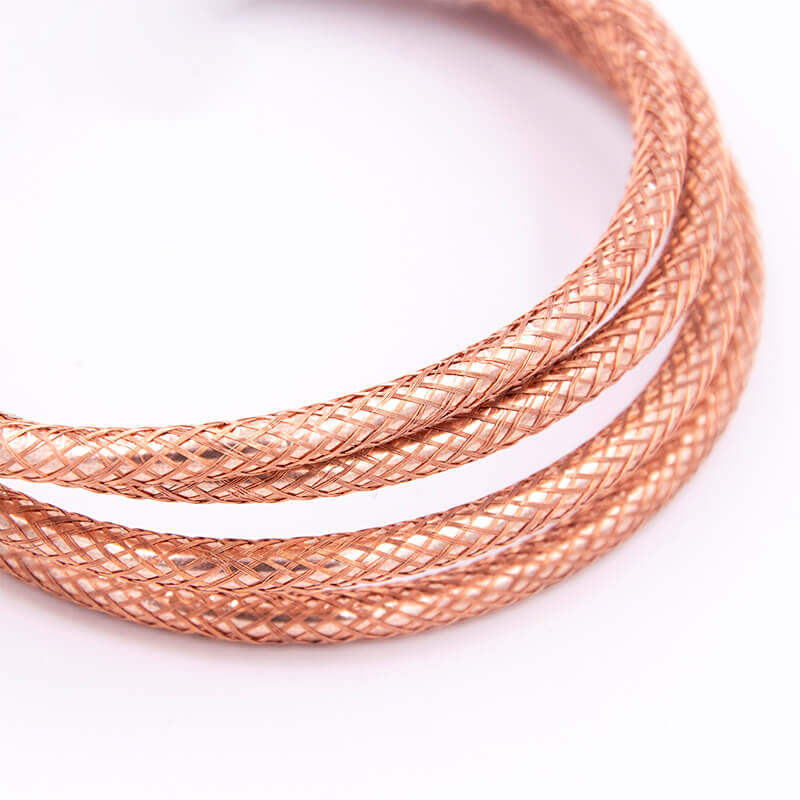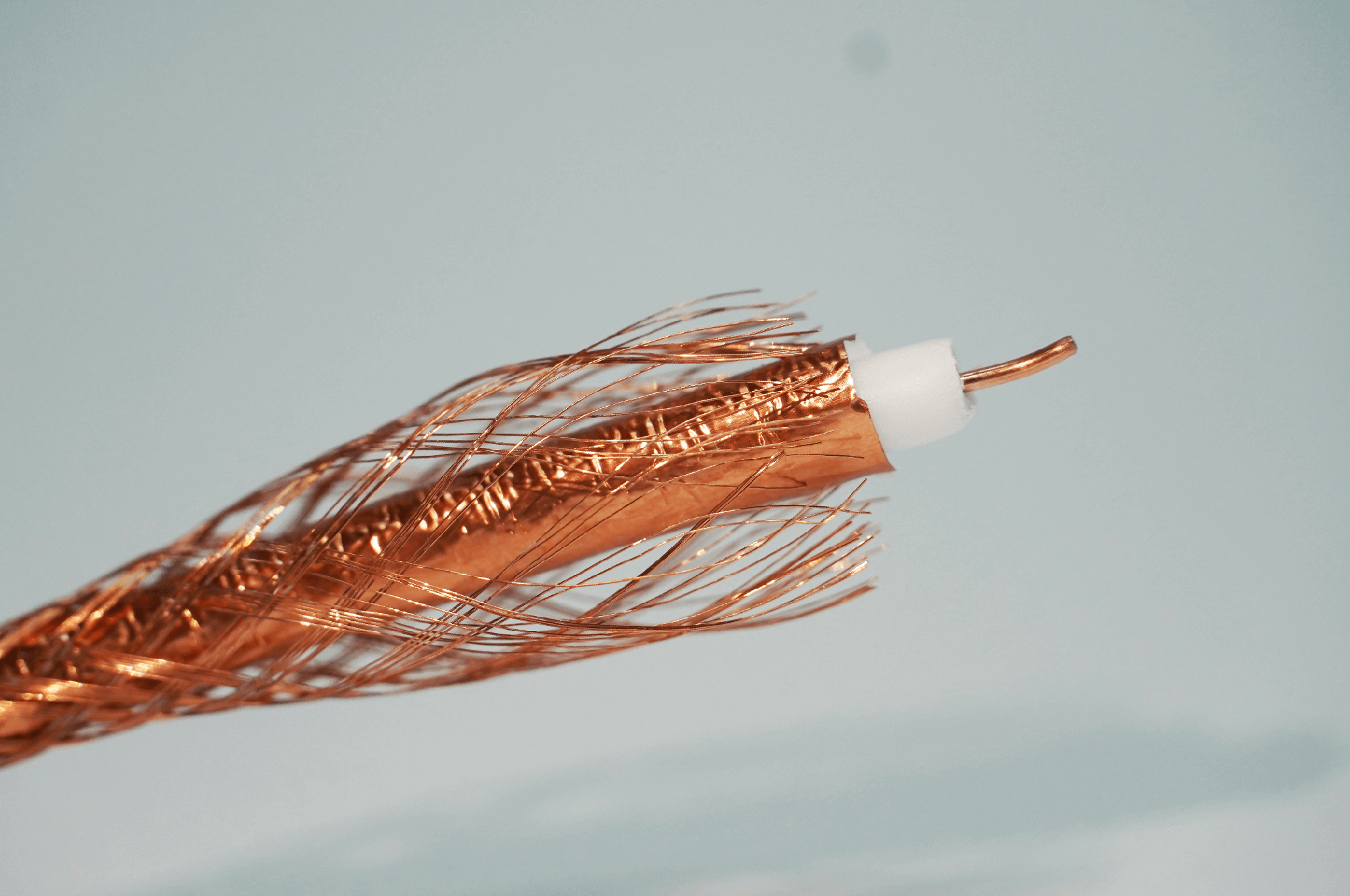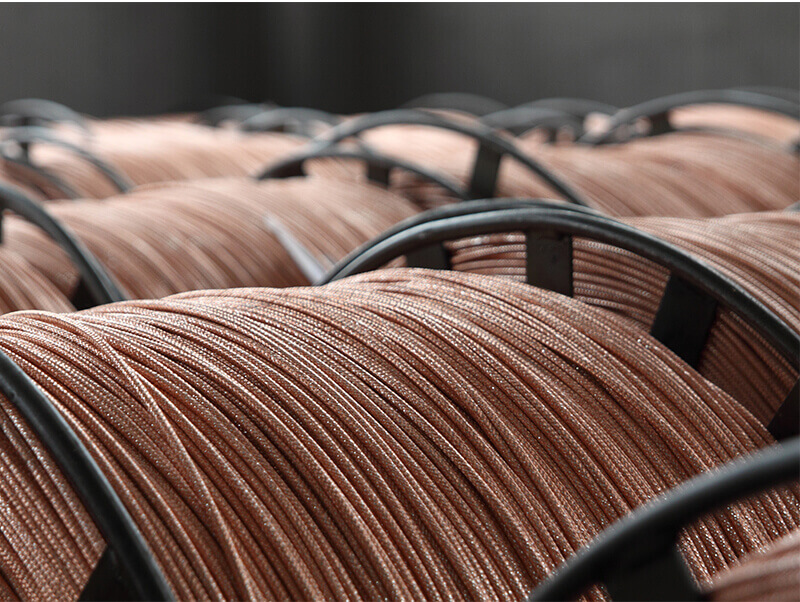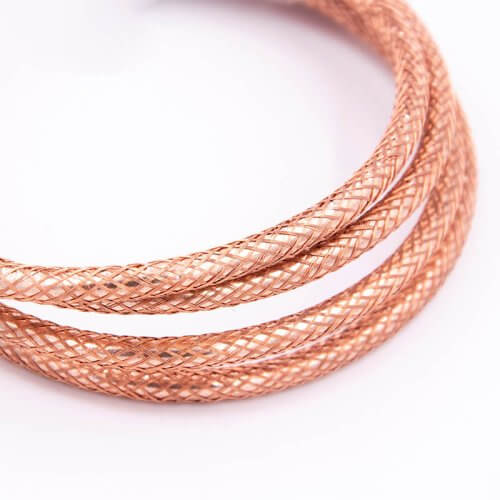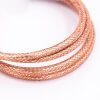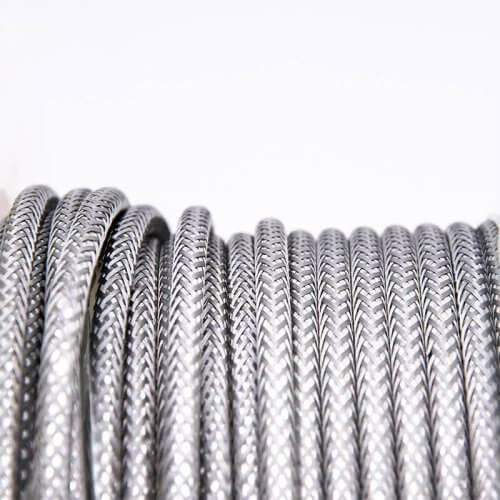Semi-Finished Coaxial Cable – RG8 CCS/48/CCA(50Ω)
1. Construction Details
| Layer | Material / Structure | Purpose |
|---|---|---|
| Inner Conductor | CCS (Copper-Clad Steel), Ø 2.70–2.75 mm | Cost-effective core with improved tensile strength |
| Dielectric | Physical Foamed Polyethylene (FPE), Ø ~7.2–7.5 mm | Provides low dielectric loss and high signal speed |
| Shielding | 48-strand Aluminum Braid (usually CCA or AL-Mg alloy) | Basic EMI protection, lightweight |
| Outer Jacket | Not included (semi-finished format) | Allows customers to add PE, PVC, LSZH, or FR jackets |
2. Electrical & Performance Characteristics
| Parameter | Value / Range |
|---|---|
| Impedance | 50 ± 3 Ohms |
| Capacitance | ~24 pF/ft (≈ 79 pF/m) |
| Velocity of Propagation | ~80% |
| Attenuation @ 100 MHz | Approx. 3.2 dB/100m |
| Shield Coverage | ~60% |
| Max Operating Voltage | Up to 1900V RMS |
| Operating Temperature | -20°C to +75°C (depends on final jacket) |
3. Advantages
Lower Cost: CCS core and CCA braid reduce material costs.
Semi-Finished Flexibility: Buyer can choose final jacket color, type (PE, PVC), and branding.
Durability: CCS offers higher tensile strength, suitable for longer pull distances during installation.
Lightweight: CCA braid offers a lighter cable, easing transport and installation.
4. Limitations
Higher Attenuation: Compared to RG8 with pure copper (CU) conductors.
Moderate Shielding: 48-braid offers basic RF/EMI protection; may not be suitable for environments with high interference.
Jacket Required: Not ready for final use until jacket and connectors are applied.
5. Key Features
1. Strength & Workability
CCS conductor resists stretching and breakage during pulling
Good for field installations or DIY cable assemblies
2. Lightweight Shipping
CCA braid and CCS conductor significantly reduce weight
Easier to transport in bulk, especially for international buyers
3. Customization Potential
Buyers can apply outer jackets such as:
PE for outdoor/UV
PVC for indoor
LSZH for flame retardant markets
Print brand names and compliance codes
Comparison of RG8 Coaxial Cable Variants (Semi-Finished)
| Specification / Type | RG8 CCS/48/CCA | RG8 CU/96/CCA | RG8 CU/96/CU | RG8 CCS/64/AL |
|---|---|---|---|---|
| Inner Conductor | Copper-Clad Steel (CCS) | Pure Copper (CU) | Pure Copper (CU) | Copper-Clad Steel (CCS) |
| Shielding Material | CCA Braid (48 strands) | CCA Braid (96 strands) | Pure Copper Braid (96 strands) | Aluminum-Magnesium Braid (64) |
| Shielding Coverage | ~60% | ~85–90% | 95%+ | ~70% |
| Attenuation @100 MHz (dB/100m) | ~3.2–3.5 | ~2.6–2.8 | ~2.2–2.4 | ~3.1–3.3 |
| Tensile Strength | High (due to CCS) | Moderate | Moderate | High |
| Signal Loss | Higher | Moderate | Lower | Moderate |
| EMI Protection | Basic | Strong | Excellent | Moderate |
| Cost Level | ★★☆☆☆ (Low) | ★★★☆☆ (Medium) | ★★★★★ (High) | ★★☆☆☆ (Low) |
| Weight | Light | Medium | Heavy | Light |
| Recommended Jacket | PVC / PE | PVC / PE / LSZH | PVC / PE / LSZH | PE |
| Best Use Cases | Budget RF, short-run systems | General-purpose RF, CCTV RF | Professional RF systems | Outdoor systems |
Key Insights:
RG8 CCS/48/CCA: Best for budget-conscious applications. Good tensile strength, but weakest in shielding and signal loss performance.
RG8 CU/96/CCA: A good balance between price and performance. Decent shielding and lower attenuation than CCS-based types.
RG8 CU/96/CU: High-end professional-grade. Ideal for critical RF environments (broadcasting, repeater lines).
RG8 CCS/64/AL: Lightweight, outdoor-suited, with aluminum braid for corrosion resistance but lower conductivity.
